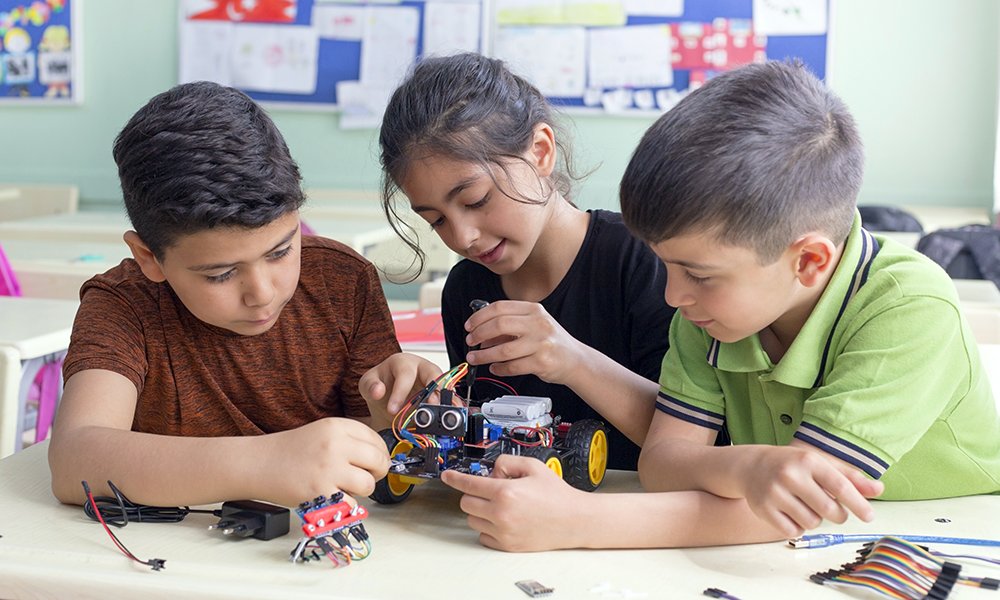
THE IMPORTANCE OF STEM LEARNING IN ELEMENTARY SCHOOLS
Take Legos, for instance. The Junior First Lego® League helps children as young as four get acquainted with the principles of building and engineering in a showcase-style competition. The league has released a set of standardized lessons so that all students involved in this program can have access to the same positive, STEM-based learning outcomes. Students involved in projects like these early on gain access to critical-thinking skills, problem-solving abilities, and hands-on experience that is largely absent from the typical classroom environment.
However, student exposure to STEM doesn't only happen in extracurricular activities. Some educators are bringing STEM into the elementary classroom. These efforts help students grasp how the real world works through the understanding of phenomena from recycling to computers. While younger students may have trouble with abstract concepts that are used in later STEM education, grounding these lessons in real-world examples can make them engaging and informative for beginning learners.
However, the focus for many schools has shifted over the last decade. Instead of exposing students to science and projects as a matter of course, many schools are rigidly focused on English and math proficiencies that will be tested on state exams. Though mastery of these subjects is vital to the long-term learning potential of a student, delaying a student's exposure to the wonders of the STEM world until later in their academic career may have unforeseen consequences. STEM education has the opportunity to spark a lifelong interest in learning that can translate into increased performance in the classroom for all subjects. Shortsightedly avoiding these more time-consuming STEM endeavors shortchanges both our students and our future workforce.
The value of STEM learning isn't just in the effects that it has on the STEM fields. With each passing year, more people are commenting on the lack of representation that minorities and women have in the STEM professions. For example, engineering is comprised of only 15 percent women. By engaging students from a young age, perhaps this gap can be closed by igniting an early passion. Further, for those who say that childhood interests have little effect on future career goals, one only has to look at the number of people who first fell in love with the arts or books or sports or any other number of fields in the first decade of life. These individuals often carry their passions for years before they blossom into post-secondary exploration and careers. However, a person cannot become passionate about something that they are unaware of. Exposure to STEM education is the first step to getting kids passionate about these subjects.
All of these benefits are in addition to the commonly held benefits that educators see in elementary classrooms, including the abilities to:- answer complex questions,
- investigate global issues,
- solve real world problems, and
- meet real world challenges while engaging in meaningful, purposeful, and relevant hands-on inquiry-based, problem-based and/or project-based learning experiences.
Many of the best teachers in the United States are teaching elementary school students. By getting these talented individuals involved in the STEM learning revolution, the STEM world can gain a valuable set of allies that will provide access to tomorrow's workers at the very beginning of their educational careers. While some elementary students may only like experiments that are cool, fun, and playful, educators and parents know that these practices are unlocking their students' potentials for advanced STEM learning in the future.
See also:Legos and Legoland Make STEM More Fun with Play based Learning
Engaging Children in STEM through Video Games
STEM Education Meaning